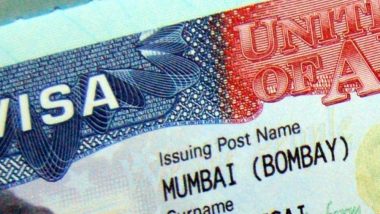The United States Citizenship and Immigration Services (USCIS) announced on Friday of exhausting the mandated number of H-1B visas for the fiscal year 2019.
As per a release on the USCIS website, it has reached the congressionally-mandated 65,000 H-1B visa cap for the fiscal year 2019. It has also received a sufficient number of H-1B petitions to meet the 20,000 visa U.S. advanced degree exemption (ADE), known as the master's cap.
H-1B, considered as the most sought-after work visa among highly-skilled Indian professionals, is a non-immigrant visa that allows U.S. companies to employ foreign workers in specialty occupations that require theoretical or technical expertise.
Further, the United States agency will reject and return the application fees for all un-selected cap-subject petitions that are not prohibited for multiple filings.
As per the clause of the multiple filings, "related entities include petitioners, whether or not related through corporate ownership and control, that file cap-subject H-1B petitions for the same beneficiary for substantially the same job" their applications will be rejected by the USCIS."
USCIS will continue to accept and process petitions that are otherwise exempt from the cap. Further, the petitions filed for current H-1B workers, who have been counted previously against the cap, and who still retain their cap number, will also not be counted toward the FY 2019 H-1B cap.
USCIS will continue to accept and process petitions filed to extend the amount of time a current H-1B worker may remain in the United States, change the terms of employment for current H-1B workers.
It will also allow current H-1B workers to change employers and allow current H-1B workers to work concurrently in a second H-1B position.
Q: What Is The H-1B Visa Quota and H-1B Cap System?
Every year there is an annual Quota (limit) of 'new' H-1B visas that can be issued; which is also known as the H-1B Cap. The total H-1B quota allocation is divided between the Regular H-1B Cap and the ADE H-1B Cap. In addition to the Regular and ADE cap subject quotas:
- H-1B cap exempt visas are available all year.
- H-1B transfer visas are available all year.
Q: How Long Does the H-1B Cap Last Each Year ?
The duration that the H-1B visa cap lasts each year, and the speed that it's reached depends on many variable factors and can change each year. Essentially, the cap lasts until such time as all the visas for that year's quota have been filed and issued. Sponsorship recruitment for H-1B visas takes place all year round by many sponsor companies (especially larger corporations) to ensure they have time to plan, recruit, select, prepare, file and get issued visas for the workers they want, within the annual H1B quota limits and time frames.
Q: How many H-1B visas are available and can be issued each year?
Every year 65,000 cap subject visas are available for the Regular Cap and 20,000 cap subject visas are available for the ADE Cap
Q: What is the H-1B Visa Cap Start Date and Cap End Date?
H-1B cap subject visa petitions can start to be filed from April 1st each year. As H-1B visas are filed and issued, they are counted against the cap numbers. H-1B visas can continue to be filed until the cap has been reached. Sponsorship employment recruitment starts from January for the year. There is No fixed end date or deadline or cut off date to file H-1B visas. They can continue to be filed until the cap / quota is reached (until all 85,000 visas have been issued). When all 85,000 H-1B visas have been issued the cap closes for the year.
Q: What factors effect and influence the H-1B visa cap each year?
Every year there is not one, but many different factors that can all, or in part, combine to influence what will happen during each year for H-1B sponsorship employment demand, and for the volume of H-1B visas that are filed by U.S. employers. Each factor carries a 'weight' and some are more important and influential than others.
The following are some of the top factors that determine the duration, and how quickly the H-1B cap will be reached each year:
- supply: the fixed number of H1B visas that are available to be issued for the year
- supply - versus the demand by Foreign nationals who want to obtain H1B visas + the demand by U.S. companies who want to hire H1B workers
- current H1B rules, regulations and processes for visa sponsorship and visa petition filing
- new H1B rules and laws that affect which companies can or can not sponsor/file visas
- overall economic conditions
Despite the current Trump Administration's intent on encouraging U.S. companies to hire local workers, the reaching of the H-1B visa cap within a week of its opening shows the need for foreign, technically skilled workers by technology companies in the U.S.
(The above story first appeared on LatestLY on Apr 07, 2018 07:10 AM IST. For more news and updates on politics, world, sports, entertainment and lifestyle, log on to our website latestly.com).













 Quickly
Quickly












